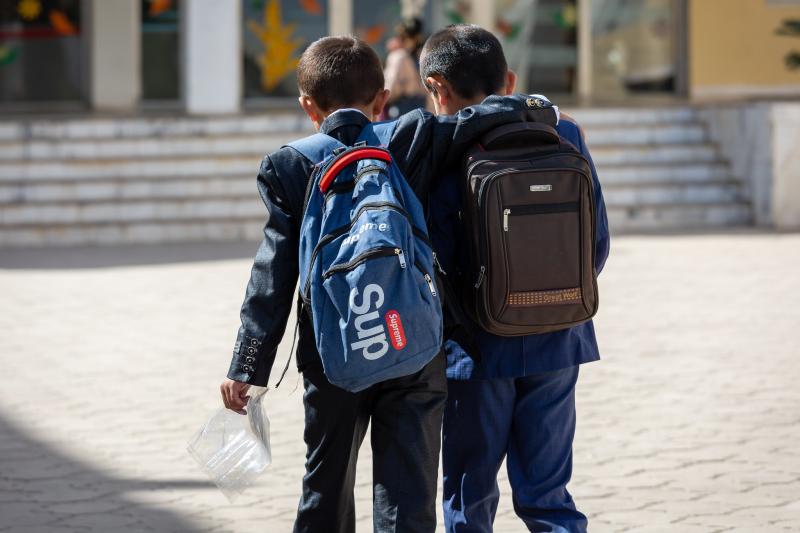
What is most striking about the case studies that have been profiled from the Global Partnership for Education (GPE) Knowledge and Innovation Exchange (KIX), a joint endeavour with Canada’s International Development Research Centre (IDRC), is they consistently challenge more traditional ideas of getting research into use. Whereas for a long time advice for researchers has focused on communicating results and seeking to close the gap between constituencies of researchers and research users, KIX demonstrates that this gap model is not realistic.
What we see instead are multilevel, highly interactive and continuous processes of change that blur the boundaries between producers and users of evidence in education systems. Perhaps we should not be surprised, given that approaches to evidence informed education in the Global South lead the way for innovation in knowledge mobilisation.
Multi-level and multi-directional knowledge mobilisation
In South Asia the Multimodal Approach for Teacher Professional Development (MATPD) project has required a highly interactive process involving teachers, trainers, NGOs, policy actors and researchers. Groups come together around a shared agenda but with their own distinct behaviours, institutional cultures and accountabilities. There is no clear demarcation between producers of research and users of it. This is a non-linear process built on trust and shaped by mutual learning. Similarly, CAMFED engaged at multiple levels in Tanzania, Zambia and Zimbabwe, to pilot and promote youth led mentorship in schools. Thorough stakeholder mapping identified actors in local administration and national government whose participation was essential for success. Relationships were formalised with MOUs and advisory committees to ensure ongoing participation in what became a learning journey.
The effectiveness of local engagement in these projects, with teachers, students and local administrators shaped, and was shaped by, national engagement with policy makers. As the team from World Vision, working with community networks in Ghana put it, this is a collective effort. Knowledge mobilisation is an exercise in sensemaking across disciplines, sectors and geographies. This ability to work across ministries, research and practice and at the local and national levels is a true reflection of engaging with complex systems. The utility of this approach is nicely demonstrated by the HISP Centre’s achievements in Uganda, where school based surveillance for COVID and Ebola was developed involving engagement with multiple government ministries, national and regional administrations, NGOs and schools and universities.
Continuous engagement
In all the examples we see a clear effort to achieve continuous engagement between all critical actors. Sustaining interactivity in this way creates a situation where policy engagement becomes part of action research. In the case of the teacher educators in South Asia the development of teacher professional development is informed by policy priorities and the scaling of the programme is supported by the fellows enrolled in initiatives at the provincial level. Likewise, CAMFED’s Learner Guides who are young women returning to schools to mentor students, are part of an immersive, generative process that is being integrated into existing government structures. World Vision’s work to improve literacy is also built on a project in which knowledge mobilisation is fully integrated and ongoing from the very beginning. It is this iterative and continuous learning and engagement that locks in behaviour change, builds trust and continually adapts the projects to changing circumstances and new challenges. However, this can be easier said than done and most of the projects reflect on how they sometimes struggled to maintain critical relationships and deal with changing environments.
Digital Knowledge Mobilisation
The innovative use of technology is also a recurrent theme. In all the projects digital strategies were deployed to increase the availability of learning but also to enhance demand for the data. In particular the University of Oslo team focused on the use of an open-source digital platform to support their network-based approach to capacity building. It was through this use of technology they could link up the local with the national in implementing new initiatives. In The Gambia they contributed to a new school registration process that made it possible to screen and categorise students with special learning needs. Without two-way communications, a clear policy commitment and data sharing this would not have been possible. The same went of efforts to utilise community networks for improved literacy in Ghana. Participatory and inclusive methods would have been inadequate without the benefit of open access digital platforms.
Embrace complexity and integrated knowledge mobilisation
The overriding lesson seems to be that knowledge mobilisation is an exercise in bridging different ways of knowing and sensemaking. All the projects in various ways were trying to combine the knowledges of children and youth, educators, researchers, provincial administrators and policy makers. This requires working across sectors such as youth, gender and education and across government ministries and policy domains. This corresponds with the literature on research policy partnerships which finds that the key qualities of effective collaboration are sustained interactivity, mutuality, and policy adaptability. However, this raises some challenges for research teams and their funders. As one project notes, sustaining engagement between frontline implementers, alongside national bodies is no easy matter. Especially when you are working in politically volatile environments. Change can take a long time and monitoring and evaluating progress that is occurring beyond your immediate sphere of influence in complex settings is very challenging. For funders, their support needs to provide an enabling environment for these multi-level and integrated types of knowledge mobilisation.
Let’s learn from KIX and work together to promote knowledge mobilisation that is integrated, shaped around a journey in which multiple actors learn from one another, and embraces complexity. At its best, education action research and knowledge mobilisation should become almost indistinguishable. This is knowledge mobilisation as learning and learning as impact.
